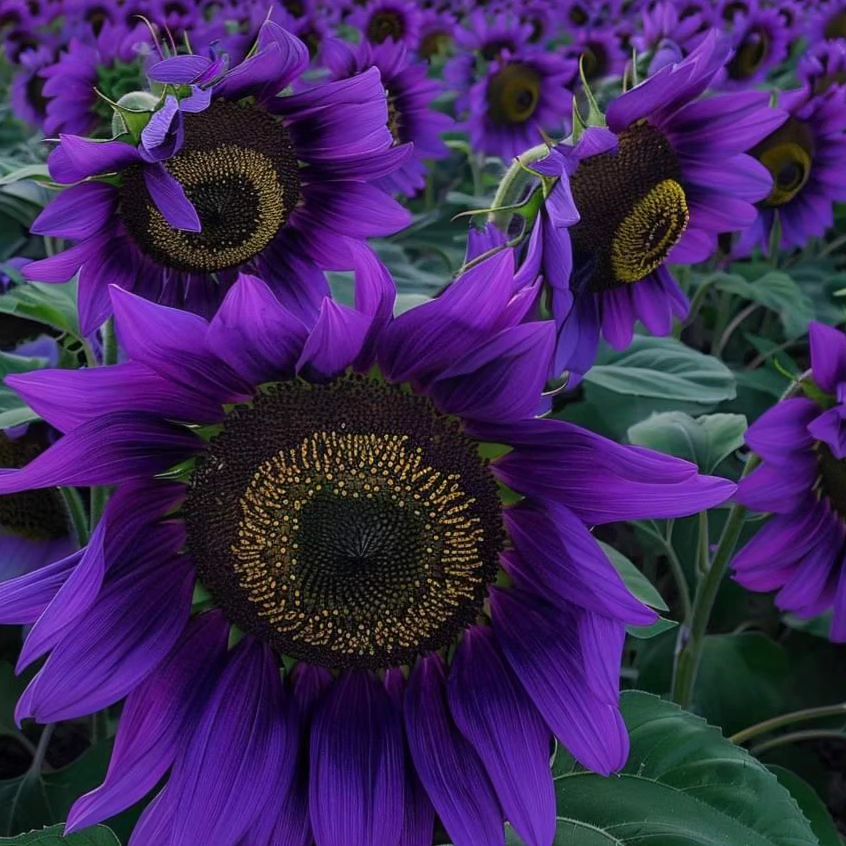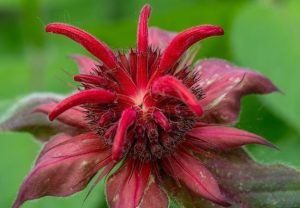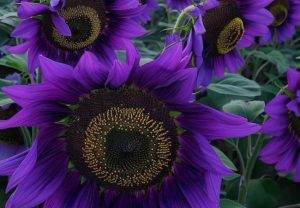Discover the beauty of purple sunflowers. Learn about their varieties, how to grow them and why these unique blooms are becoming a favorite among gardeners and flower enthusiasts.
Purple sunflowers are a stunning and unusual variation of the classic yellow sunflower. These eye-catching blooms bring a unique twist to gardens and floral arrangements. In this guide, we’ll explore the world of purple sunflowers, including their varieties, growing tips, and why they’re gaining popularity among gardeners.
Here’s a detailed chart for purple sunflowers:
| Category | Information |
|---|---|
| Botanical Name | Helianthus annuus ‘Solar Eclipse’ or ‘Purple Sun’ |
| Common Name | Purple Sunflower |
| Plant Type | Annual |
| Hardiness Zone | 2-11 (depends on variety; generally suited to a range of climates) |
| Sun Exposure | Full sun |
| Soil Type | Well-drained, fertile soil |
| Watering | Regular watering, especially in dry periods; allow soil to dry out between waterings |
| Growth Habit | Upright, branching |
| Height/Spread | Typically 4-6 feet tall; spread can vary, often 2-3 feet wide |
| Special Features | Unique purple coloration; attracts pollinators; adds a bold color contrast in gardens |
What Are Purple Sunflowers?

Purple sunflowers aren’t a naturally occurring variety. They’re the result of careful breeding and hybridization.
These flowers offer:
- Striking purple petals ranging from light lavender to deep plum
- The familiar large, round flower head of traditional sunflowers
- A unique addition to the sunflower family
Popular Purple Sunflower Varieties
Several purple sunflower varieties are available to gardeners:
- “Chianti”: Deep wine-red petals with a dark center
- “Chocolate Cherry”: Rich burgundy petals with a brown center
- “Moulin Rouge”: Deep red petals that appear purple in certain lights
- “Ruby Eclipse”: Two-toned petals with ruby red tips fading to lemon yellow at the base
Growing Purple Sunflowers
Growing purple sunflowers is similar to growing traditional sunflowers:
Planting
- Sow seeds directly in the garden after the last frost
- Choose a spot with full sun exposure
- Plant seeds 1 inch deep and 6 inches apart
- Thin seedlings to 1.5-2 feet apart when they reach 6 inches tall
Soil and Water Requirements
- Well-draining, nutrient-rich soil
- Consistent moisture, especially during germination and early growth
- Proper soil preparation can significantly improve your sunflowers’ health
Sunlight Needs
Purple sunflowers, like their yellow counterparts, love the sun:
- At least 6-8 hours of direct sunlight daily
- South-facing location is ideal in most gardens
Fertilizing
- Apply a balanced, slow-release fertilizer at planting time
- Avoid over-fertilizing, which can lead to weak stems
Caring for Purple Sunflowers
Watering
- Water deeply once a week, or more often in hot, dry weather
- Avoid overhead watering to prevent fungal diseases
Support
- Tall varieties may need staking for support
- Use bamboo poles or garden stakes to prevent wind damage
Pest and Disease Management
Watch out for:
- Aphids and sunflower moths
- Fungal diseases like powdery mildew
Use organic pest control methods when possible.
Harvesting Purple Sunflowers
For cut flowers:
- Harvest in the morning when stems are full of water
- Cut stems at an angle and place immediately in water
- Remove leaves that will be below the waterline in the vase
For seeds:
- Allow the flower head to dry on the stem
- Harvest when the back of the head turns brown
- Hang upside down in a dry, well-ventilated area to complete drying
Using Purple Sunflowers in the Garden
Purple sunflowers can be used in various ways:
- As striking focal points in flower beds
- In cut flower arrangements
- To add vertical interest to garden designs
- As part of a pollinator-friendly garden
Their unique color pairs well with yellows, oranges, and whites in the garden.
The Appeal of Purple Sunflowers
Purple sunflowers are gaining popularity for several reasons:
- Unique Color: They offer a distinctive twist on a classic flower
- Versatility: Suitable for both modern and traditional garden designs
- Conversation Starter: Their unusual color often sparks interest
- Photography: They make stunning subjects for garden photography
Challenges of Growing Purple Sunflowers
While beautiful, purple sunflowers can present some challenges:
- May not be as hardy as traditional yellow varieties
- Can be more susceptible to certain pests and diseases
- Seeds may be more expensive and harder to find than common sunflower seeds
Where to Find Purple Sunflower Seeds
You can find purple sunflower seeds from:
- Specialty seed catalogs
- Online gardening retailers
- Some local garden centers and nurseries
Always buy from reputable sources to ensure you’re getting true purple varieties.
Purple sunflowers offer a unique and striking addition to any garden or floral arrangement. With their rich, unusual colors and familiar sunflower shape, they’re sure to become a talking point in your outdoor space. While they may require a bit more care and attention than their yellow cousins, the reward of these beautiful blooms is well worth the effort.
Whether you’re an experienced gardener looking for something new or a beginner eager to try a unique flower, purple sunflowers are an excellent choice. Their beauty, combined with the joy of growing sunflowers, makes for a rewarding gardening experience. Happy planting!
For more gardening tips and plant care guides, visit https://solanogarden.org/



